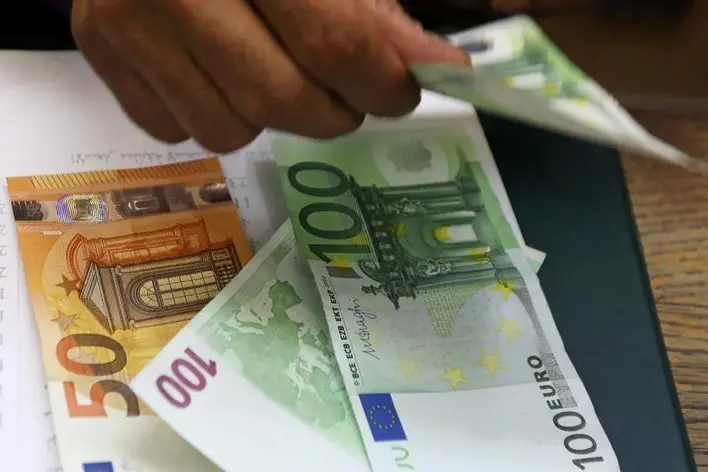PHOTO
TOKYO - The euro held on to big gains on Friday after the European Central Bank expanded its stimulus more than expected to prop up an economy dealing with its worst recession since World War Two.
The euro's gains supported appetite for riskier currencies in Asia and helped push the U.S. dollar near three-month lows against a basket of currencies.
The ECB increased its emergency bond purchase scheme by 600 billion euros to 1.35 trillion and extended the scheme to mid-2021. Markets had expected an expansion of 500 billion euros.
The euro fetched $1.1338, having risen to as high as $1.1362 on Thursday, its loftiest level in almost three months.
On the week, the single currency has risen 2.1% and is set to clinch a third straight week of gains.
Investor confidence in the currency has also grown after Germany last month threw its weight behind the idea of a European Union recovery fund, breaking away from its long-held tradition to resist moves towards fiscal integration in the currency bloc.
"Recent actions by both the EU Commission, as well as the ECB have reduced tail risks around the euro area economic outlook," said Zach Pandl, co-head of global foreign exchange at Goldman Sachs in New York.
"Europe's main challenge is its incomplete fiscal policy architecture. However, European institutions are making important changes to correct those weaknesses. And those include the ECB's bond purchases as well as the EU recovery fund proposal, which we think will go a long way towards improving fiscal policy coordination in the euro area," he added.
Against the yen, the common currency changed hands at 123.620, having risen to a 13-month high overnight.
On the Swiss franc, another safe haven currency, it hit a five-month high on Thursday and last stood at 1.0830.
The dollar index is on course for its third consecutive week of losses at 96.808, staying near its lowest in nearly three months.
Against the yen, the dollar traded at 109.11, briefly touching a two-month high of 109.235.
Unwinding bets on safe-haven currencies reflected broad optimism in financial markets as easing social distancing restrictions supported economic recovery hopes.
The U.S. weekly jobless claims report showed the number of Americans filing for benefits dropped below 2 million last week for the first time since mid-March, even though that is still three times larger than their peak during the global financial crisis.
Official U.S. employment data due later on Friday is expected to show nonfarm payrolls fell by 8 million in May after a record 20.537 million plunge in April.
The unemployment rate is forecast to rocket to 19.8%, a post-World War Two record, from 14.7% in April.
"The market is risk-on despite historic levels of jobless rate. But everyone is still wary that the mood could change, and putting tight stop-loss orders. There is no strong conviction," said Bart Wakayabashi, Tokyo Branch Manager of State Street Bank.
The Australian dollar, often seen as a risk proxy in the currency market, stood at $0.6947, having hit a five-month high of $0.6987 on Thursday.
The Hong Kong dollar rose to 7.7500 per U.S. dollar, the strong end of its 7.75-7.85 trading band, for the first time since May 21, prompting the Hong Kong Monetary Authority to intervene in the market.
The gains came even amid rising worries about the future of the city after China's move last month to impose national security legislation.
Hong Kong police on Thursday pepper-sprayed some protesters who defied a ban to stage candlelight rallies in memory of China's bloody 1989 Tiananmen Square democracy crackdown.
(Editing by Sam Holmes and Jacqueline Wong) ((hideyuki.sano@thomsonreuters.com; +81 3 4563 2768;))












